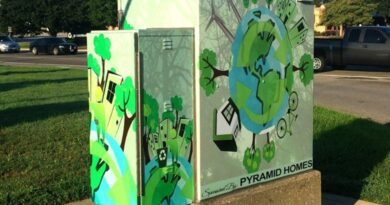Pyramid Homes Of East Texas Goes GREEN
Anwar Khalifa, President of Pyramid Homes has become East Texas’ first to complete the National Association of Home Builders (NAHB) certification process to become a Certified GREEN Professional. Pyramid Homes is committed to building all its new homes GREEN.
What does a GREEN built home mean to the home buyer? GREEN homes incorporate environmental considerations and resource efficiency into every step of the building and development process to minimize environmental impact. The design, construction, and operation of a home must focus on energy and water efficiency, resource efficient building design and materials, indoor environmental quality, and must take the home’s overall impact on the environment into account. However, many of the processes and technologies that go into a green home happen behind the scenes and behind the walls.
NAHB has three levels of building GREEN; Pyramid Homes will be building homes to the highest level possible that will allow us to offer GREEN homes without impacting our affordability.

Key components of a GREEN home include:
Energy-Efficient Features
Many of the energy-efficient qualities of a green home are easy to spot. Appliances, windows, and water heating systems will likely have ENERGY STAR® ratings. The home should also include efficient lighting fixtures and bulbs. Renewable energy sources, such as photovoltaic electricity and water heating systems, further decrease the overall energy consumption within the home.
Water-Efficient Features
Fixtures and appliances such as low-flow showerheads, faucets, and toilets, and ENERGY STAR dishwashers and washing machines all conserve water. Programmed, low-volume irrigation systems, rainwater collection systems, wastewater treatment systems, and hot water recirculation systems also save water.
Resource-Efficient Features
These decisions-from home size, to an orientation on the lot, to floor plan layout-are made in the design of your home and development of the lot. The house orientation and design should take advantage of natural daylight to reduce lighting needs and should use strategies to reduce heat gain in the summer and heat loss in the winter. The home should contain renewable materials, including rapidly-renewable wood species such as bamboo, and recycled-content materials in carpets, tiles, and concrete formulations.
Indoor Air Quality Features
The heating, air conditioning and ventilation system (HVAC) must be appropriately sized for an efficient and properly ventilated home. Fans in the kitchen and bathrooms should cycle fresh air inside, and release stale air. Low-VOC paints and finishes and wallpapers should be used as well.
Outside the Home
In a green home, care should be taken to preserve trees and other vegetation native to the area. Landscaping should contain plants that are appropriate for the climate, and grouped according to water needs. Driveways and other impervious surfaces should be reduced as much as possible and may be composed of gravel, permeable block pavers, grids, or other permeable systems.
For more info please contact Anwar at :
Phone: 903/530-6464 e-mail: [email protected]



